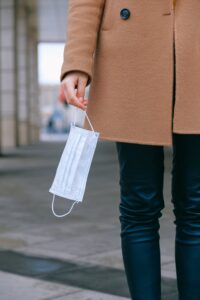 Last week, the Governor’s school mask mandate was lifted, and simultaneously, Princeton Public Schools and private schools around town made plans to follow suit or have the mandate lifting very soon. Some feel children aren’t at grave risk, and their concern about the emotional and psychological development of children leads them to feel this change couldn’t come soon enough. For others, medical risks are too great, citing the pandemic is not yet over, and they feel it is too soon to unmask. In a recent Princeton Perspectives poll taken by 75 members of the community, 56% support the change and feel it is time to unmask, 21% think we need to keep them on for the foreseeable future to keep students, staff and families safe and 23% think they need to come off, but not quite yet. Decisions about masking have come to divide, and so in order to move forward as one Princeton community, both camps need to better understand each other. Grasping the reasoning of the “other side” can help create empathy, so here are two perspectives for you to consider.
Last week, the Governor’s school mask mandate was lifted, and simultaneously, Princeton Public Schools and private schools around town made plans to follow suit or have the mandate lifting very soon. Some feel children aren’t at grave risk, and their concern about the emotional and psychological development of children leads them to feel this change couldn’t come soon enough. For others, medical risks are too great, citing the pandemic is not yet over, and they feel it is too soon to unmask. In a recent Princeton Perspectives poll taken by 75 members of the community, 56% support the change and feel it is time to unmask, 21% think we need to keep them on for the foreseeable future to keep students, staff and families safe and 23% think they need to come off, but not quite yet. Decisions about masking have come to divide, and so in order to move forward as one Princeton community, both camps need to better understand each other. Grasping the reasoning of the “other side” can help create empathy, so here are two perspectives for you to consider.
IT’S TIME TO UNMASK
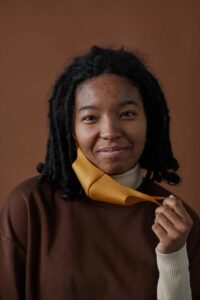 When lockdown first started two years ago, I was all for wearing masks everywhere, indoors and outdoors when around people outside our family bubble. We didn’t know much about the virus, how it spread, how it affected you, where it came from – we took every precaution possible. As time has gone on, we understand more about it. We have a vaccine and booster to help protect us. Cases have decreased in severity. Individuals with Covid-19 are experiences symptoms similar to the flu or a cold
When lockdown first started two years ago, I was all for wearing masks everywhere, indoors and outdoors when around people outside our family bubble. We didn’t know much about the virus, how it spread, how it affected you, where it came from – we took every precaution possible. As time has gone on, we understand more about it. We have a vaccine and booster to help protect us. Cases have decreased in severity. Individuals with Covid-19 are experiences symptoms similar to the flu or a cold
Our students have experienced learning interruptions and loss for the past two years. Students haven’t seen their teachers or friends faces in two years and in some cases, they haven’t EVER seen the full face of their teacher or friends. They don’t recognize them when they see them outside school without masks, at first.
Students are developing speech problems from being muffled in a mask all day. They are having trouble breathing when wearing the mask while going up and down stairs, and in gym class, when it’s hot. Students are getting acne from their masks. Masks are itchy when worn for long periods of time. Masks are annoying and students fiddle with them, they then get distracted from what’s going on in the classroom. And for those who wear glasses, it’s a tradeoff between foggy glasses and properly wearing their mask. The elastic on the masks is irritating their ears. Their ears hurt from the mask pulling on them, causing headaches. It’s been two years. Wearing a mask every day is getting expensive, especially when you wear multiple disposable masks a day. Transmission in schools is almost non-existent. There’s lots of questions as to whether masks actually work, given that many aren’t wearing them properly.
Cases in Princeton are down. The week ending February 28, there were just 15 cases. The highest weekly number was during Omicron at 287 during the week of January 4-10. The overall total number of cases in Princeton since the beginning of COVID is 2328. We’re going in the right direction. As of February 7, 87% of eligible residents in Princeton 5 and over are vaccinated. The World Health Organization has cited 60-70% herd immunity. As stated in the New York Times, Dr. Fauci has suggested herd immunity can be as high as 90%. Princeton is well above the WHO recommendation, and virtually at Dr. Fauci’s.
School cases are down. We’ve been in school for 25 weeks. 16 of those weeks there were less than 10 cases a week. Omicron was the only time we’ve gone into double digits. The high for Princeton Public Schools was 167 over winter break (December 24-January 2). Since then, the number of cases has been steadily decreasing from a high of 96 the first week of January (January 3-7) to just 6 cases across all 6 schools last week (February 26-March 4).
Lifting mask mandates places the decision of whether to wear a mask or not where it belongs – with the individual (or parent). Just like any other decision regarding health and school, each individual can do what they feel is best for them, in a given situation. It gives students a sense of power and importance at a time when they have so little control over what’s going on. We need to see each other’s faces to really understand what everyone is saying. So much is conveyed through facial expressions – you can’t see someone smile or frown when their mouth is hidden behind a mask. I realized the other day there is an entire generation that may not know how to cover their mouth when they sneeze or cough – it’s been covered for them with their mask.
The decision to wear or not wear a mask in any given situation should be up to the individual, much like wearing long pants versus shorts in winter or wearing a jacket when it’s cold. Parents can guide their children in what they feel is best for their family. Those that want to, should be able to wear a mask without any repercussions. Likewise, those that don’t want wear one, should be able to go mask less without repercussions.
THE WEARING OF MASKS NEEDS TO BE RESPECTED
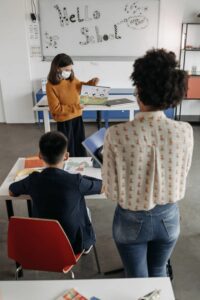 We should all celebrate our collective progress in fighting the pandemic over the last two years and that we can begin returning to some semblance of normal life. In particular, the long-awaited end of various forms of emergency rule has restored important civil liberties in our community, including in our Princeton Public Schools, where the wearing of face masks is no longer required in most situations as of March 7, 2022. Masks can be quite uncomfortable to wear, especially for extended periods of time, so for those in our community without special risk factors, this policy change may be quite welcome indeed. In addition, there is no denying that seeing each other’s facial expressions is an important aspect of communication that is lost when masks are universally worn, and so improved communication among students and teachers can be expected now that masking is voluntary.
We should all celebrate our collective progress in fighting the pandemic over the last two years and that we can begin returning to some semblance of normal life. In particular, the long-awaited end of various forms of emergency rule has restored important civil liberties in our community, including in our Princeton Public Schools, where the wearing of face masks is no longer required in most situations as of March 7, 2022. Masks can be quite uncomfortable to wear, especially for extended periods of time, so for those in our community without special risk factors, this policy change may be quite welcome indeed. In addition, there is no denying that seeing each other’s facial expressions is an important aspect of communication that is lost when masks are universally worn, and so improved communication among students and teachers can be expected now that masking is voluntary.
That being said, I believe it is necessary to use our regained freedom wisely to avoid any negative impacts on social cohesion in our schools. As voluntary masking has led to a highly visible dichotomy of masked and unmasked children and teachers together in our classrooms and hallways, there is a potential risk that masking status could lead to social divisions and discrimination in our schools, especially if the majority of students choose not to wear masks and mask-wearing students become a visible minority. If mask wearing is seen to be correlated with other differences in student backgrounds (such as race and ethnicity), the situation could become even worse. For example, back in February 2020, when my children were still attending school in California, some students became early voluntary adopters of masking in school, notably, Asian American students. They were sometimes told to “take off their masks” and otherwise made to feel uncomfortable about their decision to protect their own health and that of the community at that time, which was vindicated about a month later when schools shut down in-person learning, and masking became compulsory in a wide variety of public settings.
In order to avoid any such undesirable situation from occurring again, I encourage all parents in town to have a discussion with their school-age children about the importance of respecting the choices of their classmates and teachers who voluntarily mask, now as then, to protect their own health and that of the community, for example, by not making fun of masked students or cajoling them to remove their masks in school when they do not want to. COVID-19 is not going away, and some of our children may have people in their households who are more vulnerable to severe disease from COVID-19 infection (vaccinated or not) who need to be protected even as the rest of society opens up again. Cultural attitudes towards masking may differ as well among students and families of different backgrounds, and it is important that we all respect these cultural differences to preserve our underlying unity and recognize that we are indeed all in the same boat when it comes to community cohesion and public health here in Princeton. Let’s let our masked students and unmasked students (and our teachers) feel as comfortable as they can be in our schools as we continue to work to create the best possible educational environment for all of our children.
In addition, since the current voluntary masking policy has a trigger for requiring masking again if the risk level for our region goes back to the “High” or “Very High” levels, in our common interest of keeping our schools and community operating in a manner as close to “normal” as possible, I would suggest all parents send their children to school with a mask on hand, even if your student does not intend to wear a mask in the classroom, and to consider masking in situations where social distancing cannot be maintained (for example, in hallways while transiting between classrooms), while emphasizing the importance of continuing to respect each other’s personal (breathing) space more than would have been the case before the pandemic. By taking common-sense precautions to reduce COVID-19 transmission in our schools, we can all do our part to reduce transmission in our community as a whole (of which our schools form an integral part) and help keep the risk level for our region in the “Moderate” or “Low” range to avoid a reimposition of the mask mandate. If we all work together towards the common good in a socially responsible manner, we can enjoy our freedom of not being forced to mask our children in our schools while protecting the social, mental, and public health of our school community and the wider Princeton community for years to come.
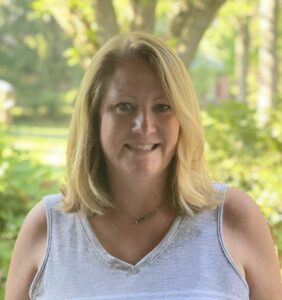 Susan Evans has been married to her husband Chris for 25 years. They have 3 girls, ages 24 (PHS ’16), 20 (PHS ’20) and 14 (current 8th grader at PMS). Sue has lived in Princeton for over 35 years. When she’s not chauffeuring her daughter to dance, Sue loves to volunteer her time and talent to her daughter’s school and several non-profit organizations. In her spare time, you can find Sue on the tennis court or cheering on Rutgers sports teams. Sue holds a BBA in Marketing from Texas Christian University and an MBA from Rutgers University.
Susan Evans has been married to her husband Chris for 25 years. They have 3 girls, ages 24 (PHS ’16), 20 (PHS ’20) and 14 (current 8th grader at PMS). Sue has lived in Princeton for over 35 years. When she’s not chauffeuring her daughter to dance, Sue loves to volunteer her time and talent to her daughter’s school and several non-profit organizations. In her spare time, you can find Sue on the tennis court or cheering on Rutgers sports teams. Sue holds a BBA in Marketing from Texas Christian University and an MBA from Rutgers University.
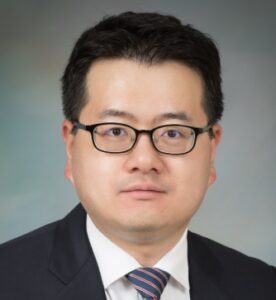 Jeffrey Liao is a current PPS parent with children attending Princeton Middle School and Littlebrook. He was born in New York City and grew up in East Brunswick, New Jersey. After majoring in Chemistry at Johns Hopkins University and obtaining his J.D. from Harvard Law School, he has been working as an Intellectual Property Attorney in New York, Los Angeles, and now in Princeton as the sole U.S. patent counsel for a multinational pharmaceutical company. He is a member of the bar of New Jersey, New York, California, and the United States Patent and Trademark Office. The main reason he chose to live in Princeton is because of the stellar reputation of Princeton Public Schools for providing excellent public education. He is a former PPS Board of Education Candidate (2021).
Jeffrey Liao is a current PPS parent with children attending Princeton Middle School and Littlebrook. He was born in New York City and grew up in East Brunswick, New Jersey. After majoring in Chemistry at Johns Hopkins University and obtaining his J.D. from Harvard Law School, he has been working as an Intellectual Property Attorney in New York, Los Angeles, and now in Princeton as the sole U.S. patent counsel for a multinational pharmaceutical company. He is a member of the bar of New Jersey, New York, California, and the United States Patent and Trademark Office. The main reason he chose to live in Princeton is because of the stellar reputation of Princeton Public Schools for providing excellent public education. He is a former PPS Board of Education Candidate (2021).
